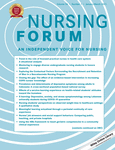Strategies for embedding population health concepts into nursing education
Abstract
Advances in community and public health are needed to address contemporary health needs, particularly poor health outcomes related to the social determinants of health and inequity. Nurses are ideally placed to promote meaningful advances in community and public health, collectively referred to as population health. Nurse educators can promote a deeper understanding of core population health concepts by threading these concepts throughout the academic nursing curricula in addition to standalone population or public health courses. Strategies for incorporating population health concepts in a variety of courses can be conceptualized through the themes emphasizing context, honoring community voices, cultivating community connection, and fostering leadership in social responsibility. Nurse educators with expertise in population health can serve as a resource for faculty as these strategies are implemented. Teaching population health provides exciting opportunities for innovative approaches to facilitate students to link their practice to wider social contexts. Further steps to strengthen the public and community health workforce will still be needed to meet population health needs.




